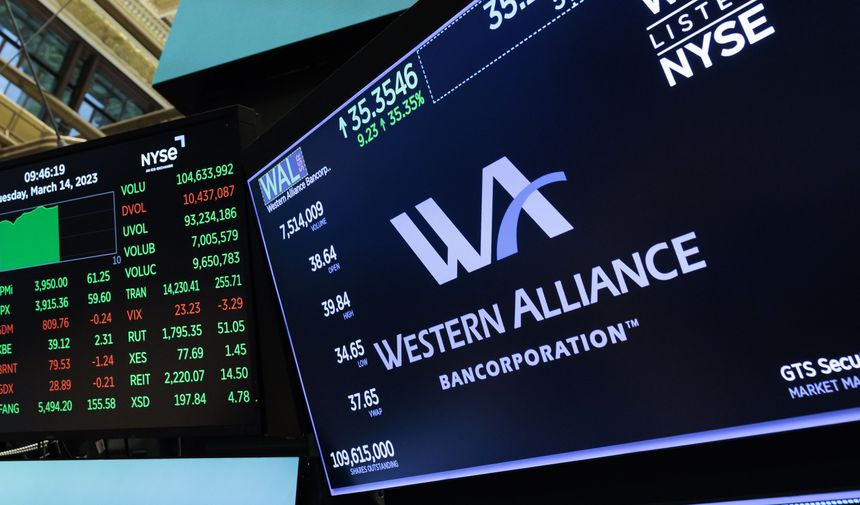The acute phase of this banking crisis might have passed. But the chronic phase might be just beginning.
Earnings season for lenders starts on Friday. It might be the most consequential series of quarterly bank reports in years, since perhaps the early days of the pandemic in 2020, or the financial crisis in 2008. One obvious question will be which banks had deposit outflows and which had inflows in the panic that followed the collapse of Silicon Valley Bank and Signature Bank last month. But that is far from all.
Outside of a couple of lenders that have made special disclosures under intense market scrutiny, such as Western Alliance and PacWest, banks won't have given updates since their last quarterly reports. Even showing steady deposits won't be enough: The question will also be what banks had to do to buy stability -- and what that will cost them going forward.
Many banks, particularly regional lenders, make the majority of their money by taking in deposits at low rates and lending at higher rates. So paying higher rates to keep depositors happy, or borrowing money from the government at premium rates, might stop a run. But it could also hobble a bank's earnings for a while.
The worrisome scenario unfolding is that many lenders, particularly smaller ones, can simply no longer count on the cheap, stable deposits they have grown accustomed to in recent years. The flood of money into higher-yielding money-market funds should be setting off alarm bells.
"Initially people wanted to move money out of certain banks for safety reasons. But it also reminded them they were getting nothing on that cash," says Frank Bonanno, managing director at StoneCastle Cash Management, which works with banks seeking deposits and customers seeking places to put cash. "After the fear went away, the greed factor came in."
Banks might have eased their deposit-outflow problems by replacing lost customer money with other forms of funding, such as advances from Federal Home Loan Banks or the Federal Reserve's borrowing facilities. But this can be much more expensive than deposits. It can also be limited in size, as banks need to post eligible collateral, and time, as it comes with term periods.
Banks' funding that includes these sources surged last month. Domestic banks outside of the top 25 largest by U.S. assets added more than $300 billion in borrowing in the week ended March 15, according to weekly Federal Reserve data. That borrowing fell later in the month, but there still has been a sizable net shift among small banks from deposits to borrowing over the past few weeks.
Other banks might have raised their deposit rates, or looked for deposits from possibly higher-cost outside sources such as deposit networks. Some might experience a shift in their share of deposits that pay zero interest to ones that do.
Banks can offset higher funding costs by charging more for loans. But they could then face questions about the quality of those loans. That will particularly be the case in commercial real estate. Banks might have an opportunity to refinance struggling offices or apartment buildings at higher rates -- but investors will be wary of throwing good money after bad.
Investors should be prepared for volatility. Yes, banks in the S&P 1500 index are overall trading at a steep discount, about 8 times forward earnings, according to FactSet data. They have rarely traded lower this century. Yet it is possible the market might still be overly optimistic. U.S. banks are coming out of a period of huge profitability, having earned over half a trillion dollars collectively over the past two years, according to Federal Deposit Insurance Corp. data. Earnings might just have further to fall than in the past.
On the positive side, some reports might show that paper losses narrowed on banks' bond portfolios because of falling market yields since the crisis. However, the problem of being locked into still relatively low yields for a long time remains. Banks with the flexibility to sell down some of those portfolios could pay off expensive government funding and preserve their earnings potential in the future -- though likely at a cost to their earnings today, as losses on the sales are reflected in net income.
The best medicine can still be a bitter pill to swallow.

